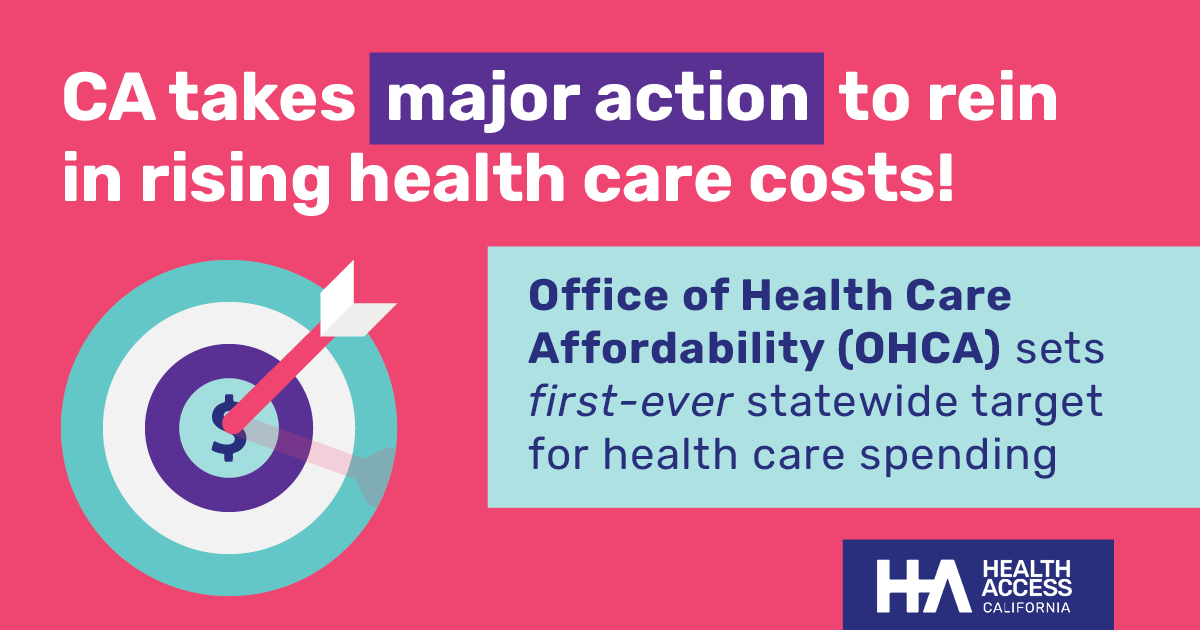In a big win for consumers facing ever-growing health care cost burdens, the Board of the Office of Health Care Affordability voted today to set a 3% health care cost growth spending target over five years, with a phase-in starting at 3.5% in 2025.
SACRAMENTO, CA – After a long debate, the board of California’s Office of Health Care Affordability (OHCA) voted on a historic effort to rein in the rising cost of care. The Board voted 6-1 to adopt a 3.5% annual cost growth target in 2025, moving down to 3% by 2029. While this final target differs slightly from the staff recommendation earlier this year, health care and consumer advocates supported this decision as it provides much needed relief to consumers who for years have been seeing their health care costs rise by 5% or more every year.
The new target is based on median income from 2002-2022, putting the real-life cost impacts to consumers at the forefront. A recent study found that Americans lost as much as $125,000 in wages because premiums for employer coverage grew faster than wages.
“After decades of Californians bearing a larger and larger burden of their health care costs and screaming for relief, the state has finally taken action to set a goal that costs should not grow faster than our income. It’s past time the health care industry is held accountable for the rising cost of care, and to set a target so the industry lives within the means that most California families do every year,” said Anthony Wright, executive director of Health Access California, the statewide health care consumer advocacy coalition.
“Health care costs right now are not just inflated, but irrational, with prices unrelated to quality, outcomes, or the cost to provide such health services. Our highly consolidated health industry gets to charge what they can, often without competitive forces trying to bring prices down. We will never meet a goal we never set, and a 3% spending target, even with a phase0-in, places some security and sanity into a system that otherwise would be unsustainable,” said Wright. “While some patients or payers may want to reduce, or even freeze, spending growth, this vote at least ensures that health costs do not outpace what Californians can afford.”
Created in the 2022 California State Budget, the OHCA is set with the task of slowing health care spending growth by setting targets, and importantly was given the power to put in place performance improvement plans and eventually enforce those targets with fines commensurate with the amount overcharged. The potential penalties are one of many features that sets the California Office apart from similar health cost target-setting commissions in nine other states, where their authority and focus are more limited.
A robust debate ensured during the meeting itself around adjustment for an aging population, but a more clean and clear decision was made in the end for a glidepath to 3%.
A livestream of the meeting is available here.
###
Press inquires can be directed to:
Rachel Linn Gish, rlinngish@health-access.org, (916) 532-2128
